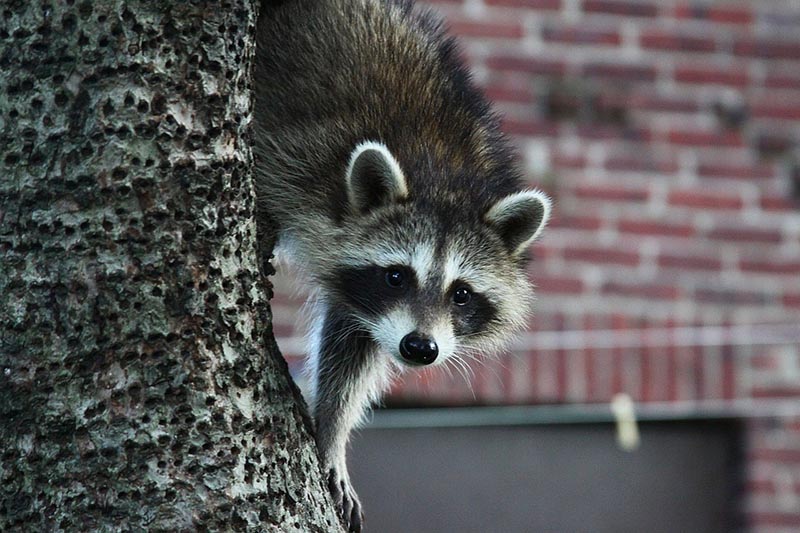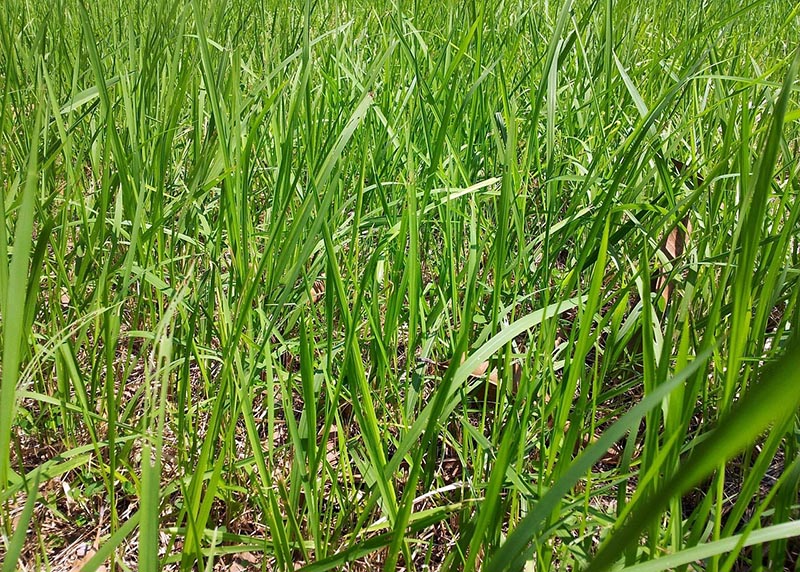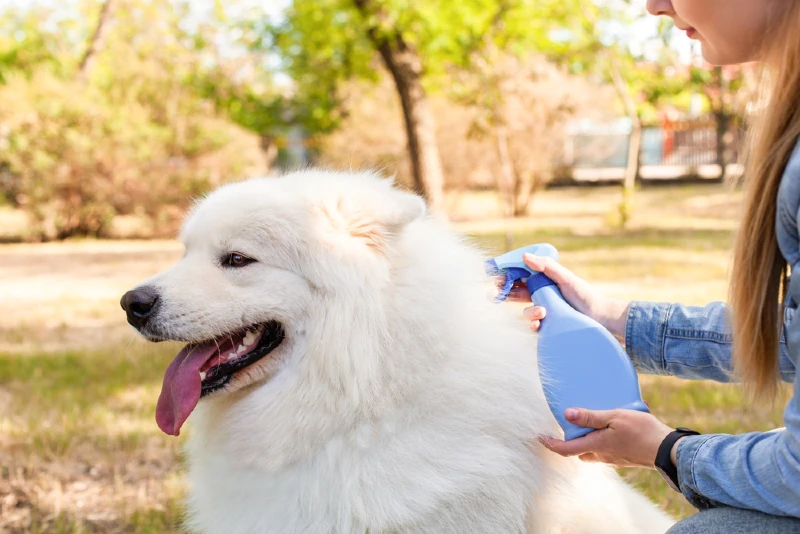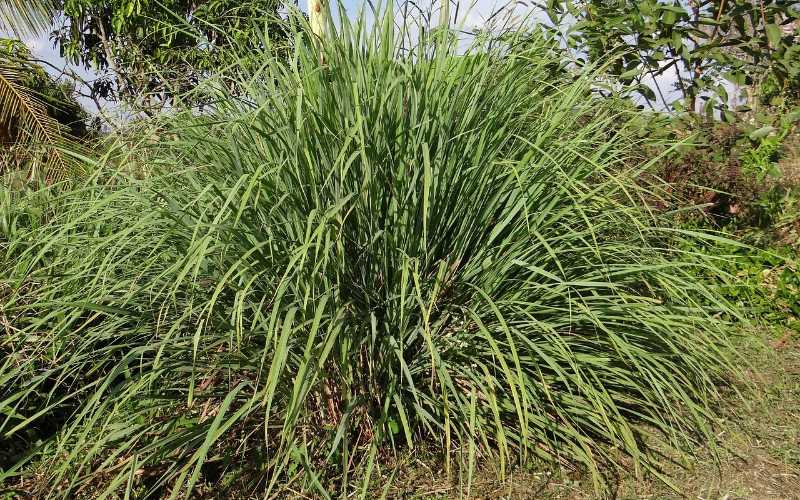How to Get Rid of Fleas in Your Yard: 8 Simple Steps
-

- Last updated:

Your yard is a great place to enjoy natural sunlight and relax. But the encroachment of fleas can ruin your comfort.
These small, wingless insects can cause discomfort and itching for humans and animals. Considering that an adult female flea can lay up to 2,000 eggs in her lifetime your yard can quickly become a flea-infested zone.
If you have pets that frequently spend time in your yard, getting rid of fleas is important to prevent bites and pets carrying the fleas to your house. This may end up causing health conditions for you and the pets.
But how do you know your yard is infested with fleas? This guide takes you through the details of whether your yard is rearing fleas, how to get rid of them, and preventive measures for keeping fleas out of your yard.
Click below to jump ahead:
How to Know if You Have Fleas in Your Yard
With a size of about 3 millimeters and a flat body structure, fleas can be visible as either reddish or brown. They have a jumping capability of up to 11 inches because of their hind legs. They breed quickly due to their fast growth cycle and can be a menace if not controlled.
Here are some signs your yard may be infested with fleas:
- If your pet is constantly scratching or biting itself, it could be a sign that they have fleas.
- Flea dirt—flea dirt is a small, dark-colored fecal matter that can be seen on your pet or in their bedding.
- Flea bites can cause itching and redness in both humans and animals. Look for small, red bumps on your skin.
- Inspect your pet, yard, and surrounding areas for the presence of adult fleas.
- Presence of little small insects moving around your pet’s eyes.

How Long Does It Take to Clear an Outdoor Infestation of Fleas?
The time it takes to deal with an outdoor infestation of fleas depends on several factors. These include:
- Size of the infested area
- The severity of the infestation
- Methods used to control the fleas
It can take several weeks or even months to eliminate an outdoor flea infestation successfully. The most effective approach is to use a combination of treatment methods, such as insecticides, natural remedies, and environmental modifications, and to monitor the area to ensure that all fleas have been eliminated.
Factors That Bring About Fleas in Your Yard
Several factors can attract fleas to your yard and create an infestation. Understanding these factors can help you prevent an infestation and take steps to get rid of fleas if they become a problem.
- Pets: Pets are the most common source of fleas in the yard. Fleas can attach themselves to pets and then be carried into the yard, where they can lay eggs and multiply. Regular flea treatment for pets can help prevent fleas from spreading to the yard.
- Wildlife: Wildlife, such as squirrels, raccoons, and birds, can bring fleas into the yard. Fleas can hitch a ride on these animals and then lay eggs in the yard.
- Stray animals: Stray animals can also bring fleas into the yard. Fleas can attach themselves to these animals and then be carried into the yard, where they can lay eggs and multiply.
- Overgrown vegetation: Overgrown vegetation can provide hiding places for fleas, making it easier for them to multiply and spread. Trimming back overgrown vegetation can help reduce hiding places for fleas and make it easier to eliminate an infestation.
- Humidity: Fleas thrive in humid conditions, so a humid yard can attract and support a flea infestation.
- Lack of sunlight: Fleas also thrive in shady, damp areas. If your yard is shaded and damp, it can attract fleas and support an infestation. Allowing more sunlight to reach the soil can help reduce humidity and make it less hospitable to fleas.

How to Get Rid of Fleas in Your Yard (8 Steps)
Getting rid of fleas in your yard can be challenging, but with a combination of effective control methods, you can eliminate an infestation and prevent its return. Here are some steps you can take to get rid of fleas in your yard.
1. Identify the source of the infestation
The first step in getting rid of fleas is to identify the source of the infestation. Fleas are often brought into the yard by pets, wildlife, or stray animals. It’s important to locate the source of the infestation and eliminate it.
2. Cut overgrown grass and vegetation
Trimming back overgrown vegetation in your yard can help reduce hiding places for fleas and make it easier for sunlight to reach the soil. This can help to reduce the humidity in the yard, making it less hospitable to fleas.

3. Treat your yard with insecticides
Using an insecticide specifically designed for flea control can help kill adult fleas and their eggs. Follow the instructions carefully and reapply as needed.
4. Use natural remedies
Several natural remedies can help to get rid of fleas in your yard. For example, diatomaceous earth is a natural powder that can be sprinkled on the ground to kill fleas. Other natural remedies include neem oil, eucalyptus oil, and citrus oil.

5. Apply nematodes
Nematodes are tiny worms that can be used to control flea populations in your yard. They infect flea larvae and kill them before they mature into adult fleas.
6. Keep your yard clean
Keeping your yard clean and free of debris can help reduce the number of places where fleas can hide. This includes removing piles of leaves, branches, and other yard waste.

7. Treat your pets
Fleas can easily infest your pets and bring them back into your yard, so it’s important to treat them regularly. You can use flea collars, shampoos, or spot-on treatments.

8. Observe the situation
Once you’ve taken steps to eliminate the flea infestation in your yard, it’s important to monitor the situation to ensure that the fleas have been eliminated. Check your pets regularly for signs of fleas and treat them promptly if necessary.
Plants That Repel Fleas
As part of your efforts to repel fleas from your yard, you can also grow the following plants in your yard to keep fleas off. These plants include:
- Cedar: This tree’s wood emits an odor that repels most bugs. You don’t have to plant the tree, but you can get pieces of its wood and place them in your yard.
- Citronella: Citronella, widely recognized for warding off mosquitos, can also work against fleas.
- Lavender: This plant gives out a strong scent that has a repelling effect on fleas. It’s good to have it grow in your backyard for easy control of fleas.
Other plants that work well as repellants include eucalyptus, rosemary, catnip, and fleabane daisy.
You can plant them around your house or on the edge of your home’s perimeter for the effective repelling of fleas.

Conclusion
Getting rid of fleas in your yard can be a challenge, but with the right approach, it can be done. Combining multiple methods is often the best way to eliminate fleas.
When using chemicals, it’s important to follow the manufacturer’s instructions and take appropriate safety measures. In addition to these methods, it’s also important to prevent reinfestation by treating your pets regularly and removing sources of food and shelter for fleas. With persistence and the right approach, you can get rid of fleas in your yard and keep them away for good.
Featured Image Credit: Tomasz Klejdysz, Shutterstock
Contents

